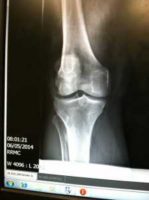02 May Which NSAID for Knee Pain Works Best?
MedicalResearch.com Interview with:
 Deborah S. Cummins, PhD
Deborah S. Cummins, PhD
Director, Research, Quality and Scientific Affairs
American Academy of Orthopaedic Surgeons
On behalf of the researchers:
David Jevsevar, MD, MBA; Gregory A. Brown, MD, PHD, and Deborah S. Cummins, PhD
MedicalResearch.com: What is the background for this study? What are the main findings?
Response: It is estimated that individuals have a 45% risk of developing knee osteoarthritis (OA) in their lifetime. As a result of the shifting demographics of the US, where an increasing percentage of the population is older than 65, the burden of knee OA will continue to increase. To help deal with this burden, effective nonsurgical treatments are needed to manage knee OA symptoms associated with pain and function before surgical intervention becomes necessary. To determine which non-surgical options are best, we performed a network meta-analysis exploring mixed treatment comparisons for nonsurgical treatment of knee osteoarthritis in order to effectively rank the various nonsurgical treatment options from best to worst.
Our network meta-analysis suggests that the single most effective nonsurgical treatment for improving knee function is function is naproxen, followed by diclofenac, celecoxib, and ibuprofen. When considering pain and function together, our data suggest that naproxen is the most effective treatment followed by IA corticosteroid injection.
The single most effective short-term (4-6 weeks) treatment for decreasing pain is intra-articular (IA) corticosteroid injection, followed by ibuprofen, IA platelet rich plasma, and naproxen. Additionally, intra-articular hyaluronic acid injections never achieved a rank in the top five treatments for pain, function, or combined pain and function. An analysis of 12 articles also found that HA is not significantly different than IA placebo in effect.
MedicalResearch.com: What should readers take away from your report?
- Naproxen was the only treatment clinically proven to improve both pain and function in knee osteoarthritis followed by cortisone injections.
- Naproxen was shown to provide the greatest improvement in function.
- Intra-articular cortisone injections were shown to provide short-term (4 to 6 weeks) pain relief.
MedicalResearch.com: What recommendations do you have for future research as a result of this study?
Response: More research should be performed analyzing the most effective timelines and dosing for nonsurgical treatments and establishing clinically important changes in pain and function outcomes.
No additional disclosures from any of the authors.
MedicalResearch.com: Thank you for your contribution to the MedicalResearch.com community.
Citation: David S. Jevsevar, Peter B. Shores, Kyle Mullen, Danielle M. Schulte, Gregory A. Brown, Deborah S. Cummins. Mixed Treatment Comparisons for Nonsurgical Treatment of Knee Osteoarthritis. Journal of the American Academy of Orthopaedic Surgeons, 2018; 26 (9): 325 DOI: 5435/JAAOS-D-17-00318
Note: Content is Not intended as medical advice. Please consult your health care provider regarding your specific medical condition and questions.
[wysija_form id=”1″]
Last Updated on May 2, 2018 by Marie Benz MD FAAD
